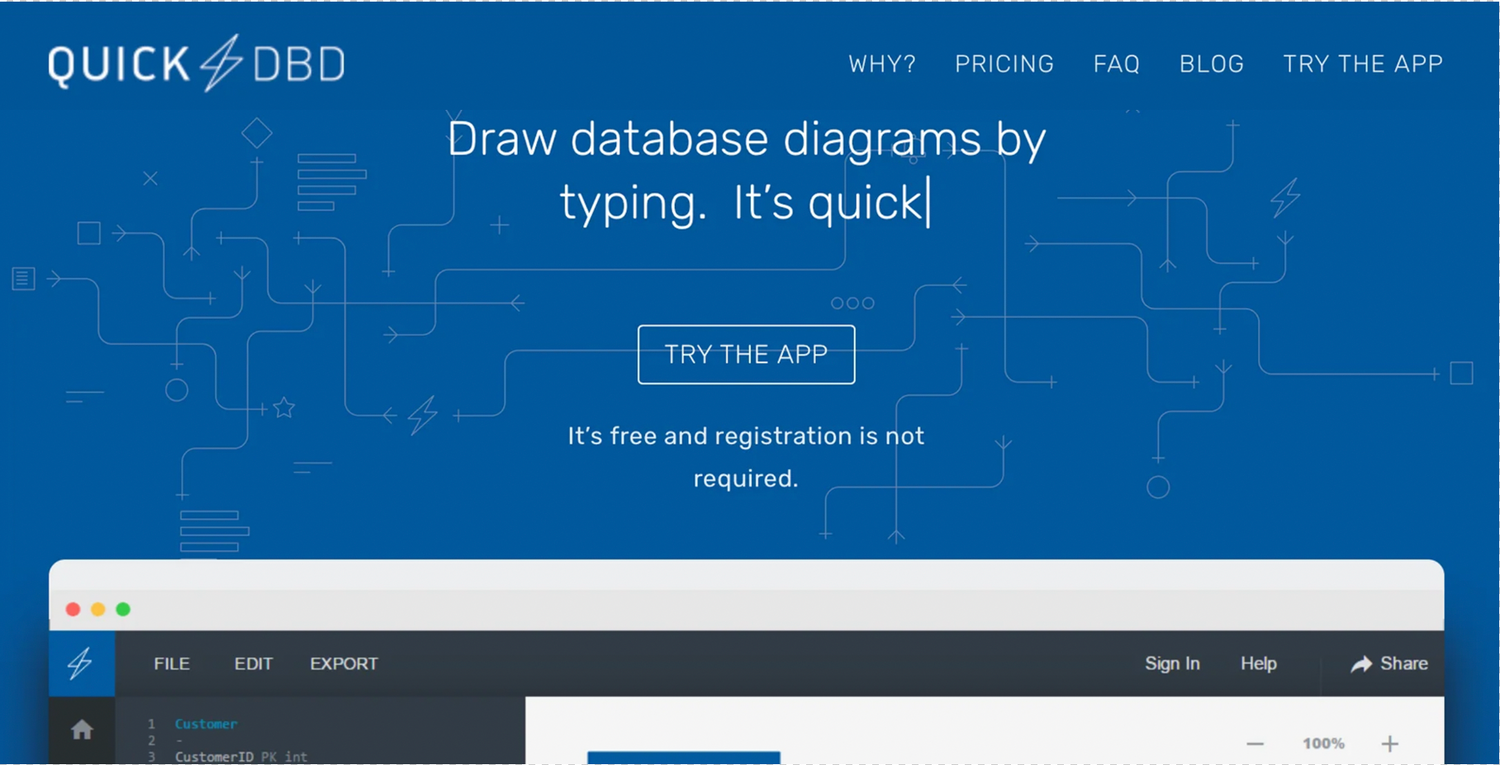Building organic traffic is a challenging task and requires much time and patience.
In this blog post, we’ll discuss 8 ways to drive organic traffic to your e-commerce store. But first, let’s discuss the difference between organic and paid traffic and why organic traffic is more important for your website.
Organic Traffic vs. Paid Traffic
Organic traffic refers to visitors that find your business through search engines like Google and Bing.
No paid promotions are involved; visitors hit the search engine for something related to your brand, and your website appears in the search results. This is done using Search Engine Optimization (SEO). It’s how you ensure your website appears among the top search results.
It's more complex than we're making it sound, but we'll get to that later.
On the other hand, paid traffic directs visitors to your online channels via paid advertising. An example is Google Ads on the top when you search for something on Google. This is also known as paid search.
Paid traffic yields faster results, no doubt about that. However, organic traffic is more beneficial in the long run.
Why Is Organic Traffic Important?
Organic traffic is a great way for eCommerce stores to reach a wider audience without incurring costs associated with paid advertising.
Moreover, visitors that come through organic channels tend to be more engaged and likely to make purchases as they are actively searching for products the store offers.
An eCommerce store with a solid organic traffic presence is more likely to rank higher on search engine result pages, which increases the store's visibility and credibility in the eyes of potential customers.
Overall, organic traffic is a vital source of potential customers for any eCommerce store.
Did you know? Customers are skeptical of websites listed on Google Ads and would instead go to the first website they find organically.
Tips To Increase Organic Traffic For Your Ecommerce Website
Here are the 8 ways you can bring in more website traffic without having to pay for it:
1. Use Keywords Strategically
We mentioned SEO briefly in the introduction. To expand, businesses that want to direct organic traffic to their e-commerce stores rely on SEO to increase their visibility.
One crucial aspect of SEO is keyword strategy. Keywords are defining words about your brand and the ones people use on search engines to find something or solve a question. It's a great tool to drive up traffic if done correctly.
We’ll tell you some ways you can use it to your advantage.
Analyze the keyword gap between your website and your competitors. You might discover potential keywords you haven't been using. You can do this using the Competitive Research tool available on SEMrush. You can get a free trial before investing your money to buy the software. It’s a fantastic tool that lets you see how your competitors are doing with their keywords and what’s their ranking.
Another suggestion we've got for you is to use more targeted keywords. Yes, using the ones with the highest traffic is appealing. Still, you'd waste your visitor's time if they're irrelevant to your store. Using targeted keywords can increase traffic as the visitors find your website when searching for something relevant to your niche. You can also use long-tail keywords (keywords made up of 3 to 4 words), as they help a lot in driving traffic to your website.
Don’t know where to start with your keyword strategy?
Do keyword research using a credible keyword tool like SEMrush or Ahrefs that lets you find popular keywords that people are typing on search engines and use them in combination with targeted keywords to maximize your organic traffic.
2. Remove Non-Performing Content
Just like everything else, content is bound to become irrelevant and outdated, and it's imperative to keep an eye on what's doing well and what needs to be improved regarding your store's online presence.
This is mainly for those e-commerce stores that publish informative content, such as blogs, on their websites.
Outdated and non-performing content can obstruct the crawling process, resulting in bots leaving your website before getting to essential pages. As a result, it hurts your search engine ranking.
However, the good news is that there are ways to tackle this before it becomes a severe problem!
Instead of wasting the entire content, you can use tools such as Google Analytics and Google Search Console to analyze the data and judge if the content has the potential to drive higher traffic volume.
This isn’t just limited to written content, though. Suppose your products have new packaging now, but you’re still using old product images that feature the old branding. You don't want your visitors to get confused and leave, do you?
Here’s what to look for when searching for outdated and non-performing content: broken links, outdated statistics, unoptimized writing, etc.
3. Use Influencer Marketing
How can we write this blog without including one of today's hottest marketing trends? Influencer marketing!
By definition, influencer marketing uses influencers/content creators to promote your brand and sell your products/services. If you have an e-commerce business, using influencer marketing can do wonders for increasing your organic traffic!
Imagine your store sells apparel, and a lifestyle/fashion influencer talks about your brand or shows herself wearing your clothes on Instagram. She then tags your social media account and links to your website.
Her followers would want to explore your brand after seeing their favorite blogger sport your apparel in her pictures. See where we’re going with this?
You don't necessarily have to pay influencers; you can offer them a barter collaboration– influencers can promote your brand's products/services, and in turn, you'll provide them with free merchandise/samples to use.
4. Target “People Also Ask” On Google Search
We've all encountered a section called People Also Ask when running a search on Google. It's where the search engine suggests similar questions asked by people that could help with their questions.
The answers are precise with the link attached that’ll take the visitors to the website.
If you’ve been facing trouble with your search engine ranking, this could be an excellent alternative to increase your website’s visibility.
Try entering keywords and phrases relevant to your business and scroll down to the related searches at the bottom. If you optimize your website content according to those questions, your chances of showing up on the People Also Ask section will increase.
5. Leverage On-Page SEO
Optimizing your web pages for search engines is crucial!
What exactly does it include? On-page SEO includes optimizing the blogs, if you’ve published any, and the meta descriptions, headings and subheadings, HTML tags, etc.
These are the things you might not think about twice but can significantly improve your ranking on SERPs.
One way to do this is to write precise meta-descriptions highlighting your products' fundamental concepts. Use relevant images on your website that can immediately convey your business.
Keywords play a significant role here, particularly in writing titles. Don't we all like it when we search for something and a website pops up that's exactly what we were looking for?
6. Improve Website Speed
Imagine if your website takes ages to load– your visitors won't wait forever and, instead, switch to another website to get the information they want.
While SEO is one of the most critical aspects of driving traffic to your store, let’s not neglect the speed with which your web pages load.
If your website is slow, visitors spend less time on your online store. Did you know this hurts your website’s SEO? A slow website increases bounce rate and decreases dwell time, which affects rankings.
You can check your page speed using Google's PageSpeed Insights. If you identify an issue, you can switch to a faster domain/host. It may be more expensive than the one you're currently using, but it's worth it!
Contact a developer if you need help with how to do any of this.
7. Optimize Internal Links
Although we've mentioned optimizing internal links in the Leverage OnPage SEO section, this deserves a separate paragraph.
An underrated yet highly effective SEO trick is to optimize internal links on your e-commerce site.
Internal links are hyperlinks that take you from one website page to another. This is especially common for e-commerce websites. By linking the other content on your website to the page users have opened, you're making them stay on your website longer than they usually would.
For example, visitors have found a page that shows your new collection but wants to check out the items on sale. By clicking on the sales CTA (Call To Action) button available on the page they're currently on, they'll be directed to another page of your website with all the items on sale.
See how they spent more time on your website because of this?
This will help increase the chances of conversion and your sales.
8. Leverage Social Media Channels
This is more of an indirect way of increasing organic traffic to your website, but anything that works, right?
A successful digital marketing strategy is only complete with social media, as it holds tremendous potential to drive up sales for your business.
Nowadays, having a solid social media presence makes your business look 'legit,' your followers are more likely to visit your website if they perceive you as a legit and trustworthy brand.
This section may seem like not much was provided, and that is intentional. Social media is a massive beast. We could write 30 articles with 100s of pages each. The point is to start small with your social media and keep at it.
Final Thoughts
Here you go! 8 excellent tips to help you increase your ranking and store visibility on search engines.
Keep in mind that the whole process is mainly about trial and error. Try these tips and find out what works best for your store!



